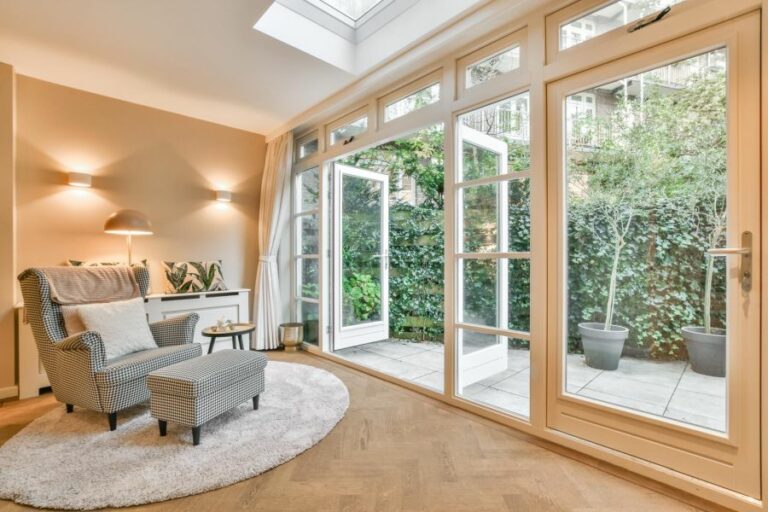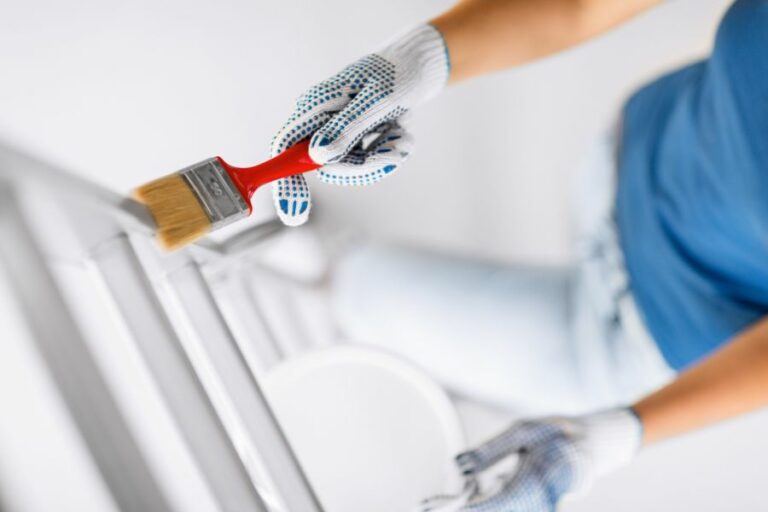Luminous Indoor Wall Coatings, 25 Things You Should Know
Are you tired of the same old boring walls in your home or office? Looking for a unique yet practical way to bring some light and life into your interior spaces? You’ve come to the right place! We’ve got the perfect solution for you: luminous indoor wall coatings.
Luminous indoor wall coatings:
Luminous indoor wall coatings, or glow-in-the-dark wall paints, are decorative materials that absorb and store ambient light, emitting a soft glow in the dark. Available as phosphorescent or fluorescent coatings, they offer aesthetic, functional, and safety benefits in various indoor settings. These coatings enhance safety, promote energy efficiency, provide versatile design options, and are durable, making them a valuable addition to residential and commercial spaces.

Discover the magic of luminous indoor wall coatings that transform your living spaces into enchanting, glowing realms at night. Unleash your creativity and read on as we light up your world with a radiant new perspective on interior design. Stay tuned. The revolution begins here!
Contents
- 1 Radiant Interior Wall Finishes
- 2 The Lifespan of Glow-in-the-Dark Paint
- 3 Most Durable Glow-in-the-Dark Paint
- 4 Top High-Gloss Paint for Indoor Walls
- 4.1 • Gloss and Sheen Levels
- 4.2 • Paint Durability
- 4.3 • Ease of Application
- 4.4 • Environmental Considerations
- 4.5 • Conclusion
- 4.6 • An Overview of Glow-in-the-Dark Paint for Walls
Radiant Interior Wall Finishes
• Introduction to Luminous Wall Coatings
Luminous indoor wall coatings, also known as glow-in-the-dark wall paints, are innovative and practical decorative materials that absorb and store ambient light.
When the lights go out or the area gets dark, these coatings emit a soft, calming glow, providing an aesthetically pleasing and functional effect in various indoor environments.
• Types of Luminous Wall Coatings
Luminous wall coatings come in two primary categories: phosphorescent and fluorescent.
– Phosphorescent Coatings
Phosphorescent coatings contain phosphors, which are materials that emit light in the absence of an external light source. These coatings emit a longer-lasting and steadier glow compared to their fluorescent counterparts.
They are most commonly used in residential and commercial settings due to their ability to glow for hours after being charged by ambient light.
– Fluorescent Coatings
Fluorescent coatings contain materials that emit light when exposed to ultraviolet (UV) rays. These coatings provide a vibrant, neon-like effect under UV or black light sources but do not glow in complete darkness like phosphorescent coatings.
Fluorescent coatings are more suitable for entertainment and party venues where UV lights are often used.
• Benefits of Luminous Wall Coatings
Aside from their visually striking appearance, luminous indoor wall coatings offer various advantages:
– Enhanced Safety
Glow-in-the-dark wall coatings can act as a safety feature in dark or dimly lit areas by highlighting specific zones, such as exits, stairways, or potential hazards.
– Energy Efficiency
By emitting a soft glow, luminous wall coatings reduce the need for continuous artificial lighting, promoting energy efficiency.
– Versatile Design Options
Luminous wall coatings are available in various colors and finishes, providing creative opportunities for unique, striking designs in any indoor setting.
– Durability
High-quality luminous wall coatings are resistant to wear and can last for years, making them a worthy long-term investment.
• Applications of Luminous Wall Coatings
Luminous wall coatings can enhance various indoor spaces:
- Residences: Children’s bedrooms, playrooms, and home theaters can benefit from the unique, calming glow created by phosphorescent wall coatings.
- Commercial spaces: Office spaces, recreational facilities, and hotels can incorporate these coatings to create a unique aesthetic or provide directional guidance in dimly lit areas.
- Entertainment venues: Fluorescent wall coatings can create eye-catching visual effects in clubs, bars, and other party spaces illuminated by UV lights.
• Selecting and Applying Luminous Indoor Wall Coatings
Here are some key factors to consider when selecting and applying luminous wall coatings:
– Type of Coating
Choose between phosphorescent and fluorescent, depending on your specific needs, whether it’s a continuous glow in darkness or a vibrant effect under UV lights.
– Quality and Performance
Select high-quality, reputable luminous wall coatings that have longer-lasting and brighter glow-in-the-dark effects.
– Surface Preparation
Ensure a clean, smooth surface by filling in any holes or cracks and applying a primer if necessary.
– Base Coat
Apply a base coat in a color that complements the luminous coating to improve coverage and overall appearance.
– Application Method
Different luminous wall coatings might have specific application methods or tools (e.g., brush, roller, spray). Follow the manufacturer’s recommendations for best results.
– Safety Precautions
Ensure proper ventilation during application and drying. Follow the safety guidelines provided by the manufacturer.
– Maintenance
Regular cleaning and maintenance, as advised by the manufacturer, will help prolong the lifespan and performance of luminous wall coatings.
• Conclusion
Luminous indoor wall coatings are an innovative addition to any indoor space, offering aesthetic, functional, and safety benefits.
Whether it’s for residential or commercial interiors, these coatings provide unique, versatile design options that can create striking visual effects and improve energy efficiency.
By carefully considering the type of coating, quality, application method, and maintenance requirements, luminous wall coatings can add a touch of brilliance to any space for years to come.
The Lifespan of Glow-in-the-Dark Paint
Luminous paint, often referred to as glow-in-the-dark or phosphorescent paint, has gained popularity in various applications ranging from home decor to industrial usage.
Understanding the longevity of luminous paint can help you choose the right product for your project and manage your expectations regarding its performance.
– Factors That Affect Luminous Paint Lifespan
The duration for which luminous paint will maintain its glow depends on several factors, such as:
- Quality of the paint: Higher-quality paints often last longer than low-quality alternatives.
- Type of luminescent pigment: Different pigments have varying glow duration and intensity.
- Environment: Exposure to elements like sunlight, dust, and moisture can affect the paint’s longevity.
- Application method: Proper preparation and adherence to manufacturer guidelines can improve the lifespan of the paint.
- Frequency of use: Luminous paint’s glow may gradually fade with constant exposure to light, influencing its overall lifespan.
– Lifespan of Different Types of Luminous Paints
There are primarily two types of luminous paint:
- Phosphorescent paint: This type of paint uses phosphor particles that absorb and store light energy. Once the light source is removed, these particles release the stored energy slowly, resulting in a longer-lasting glow.
Phosphorescent paint can usually last between 10-12 hours after being exposed to light for only a few minutes. However, it is essential to note that the glow’s intensity will decrease over time.
- Fluorescent paint: These paints use fluorescent pigments that emit light immediately upon exposure to a light source. Fluorescent paint does not store energy and will only glow while receiving light.
Fluorescent paint lasts only as long as it is exposed to a light source. Once the light is removed, the glow will diminish immediately.
It is important to note that both types of luminous paint can lose some of their effectiveness over time, especially with repeated exposure to light.
– Increasing the Lifespan of Luminous Paint
To prolong the glow and overall lifespan of luminous paint, implement the following steps:
- Choose a high-quality paint: Research and select a quality product from a reputable manufacturer.
- Use appropriate pigment concentration: Increasing the concentration of the luminescent pigment can improve the glow intensity and duration.
- Apply multiple layers of paint: Applying multiple layers of luminous paint can provide added protection and enhance the glow.
- Seal the paint: Use a clear sealant over the luminous paint to protect it from environmental factors that may affect its performance.
- Recharge the paint: Periodically expose the paint to a strong light source to recharge its glow capacity.
– Luminous Paint in Industrial Applications
Luminous paint has found widespread use in various industrial applications, such as emergency egress systems, signage, and markings in commercial buildings, airplanes, and ships. For these purposes, a reliable and long-lasting glow is required.
High-performance luminous paint products specifically designed for industrial applications can last up to 25 years or more, with minimal degradation in glow intensity.
However, these products may be more expensive and might require specialized application techniques. Always consult government regulations and guidelines (such as the International Building Code (IBC) and Occupational Safety and Health Administration (OSHA)) to ensure compliance when using luminous paints in professional settings.
– Final Thoughts
The lifespan of luminous paint largely depends on the paint’s quality, the luminescent pigment used, the environment, the application method, and the frequency of use.
On average, phosphorescent paint can maintain its glow for 10-12 hours, while fluorescent paint requires continuous exposure to light. High-performance products designed for industrial application can last up to 25 years or more.
To prolong the lifespan of luminous paint, choose high-quality paint, use the appropriate pigment concentration, apply multiple layers, seal the paint, and recharge it periodically by exposing it to a strong light source.
When working with luminous paint in industrial settings, always adhere to government standards and guidelines.
Type of Luminous Paint | Duration |
|---|---|
Glow-in-the-dark paint | Several hours after being exposed to light |
Phosphorescent paint | Up to 12 hours after being exposed to light |
Photoluminescent paint | Up to 24 hours after being exposed to light |
Most Durable Glow-in-the-Dark Paint
• Understanding Luminescent Paint
Luminescent paint, commonly known as glow-in-the-dark paint, is a type of paint that absorbs light and then emits it in the form of a glow. This type of paint is widely used in various applications such as traffic signs, watch dials, and even toys, making it both practical and entertaining.
There are two types of luminescent paint: phosphorescent and fluorescent. Fluorescent paint absorbs ultraviolet (UV) light and emits it in the visible light spectrum, creating a bright glow.
In contrast, phosphorescent paint absorbs light and then releases it over an extended period causing it to glow for a more extended period even after the light source has been removed.
A crucial factor that affects the performance and longevity of luminescent paint is the type of pigment used. Understanding the pigments can help you find the longest-lasting luminescent paint for your needs.
• Long-Lasting Phosphorescent Pigments
Phosphorescent pigments are what make luminescent paint shine for a long time after the lights have been turned off. The best and most durable phosphorescent pigment available today is strontium aluminate.
– Strontium Aluminate: The Superior Phosphorescent Pigment
Strontium aluminate is a comparatively new pigment that has outperformed its predecessor, zinc sulfide. This pigment is not only much brighter than zinc sulfide but can also last up to 25 times longer.
Moreover, it has shown resistance to humidity, temperature changes, and various chemicals, making it suitable for a wide range of applications.
When searching for long-lasting luminescent paint, look for products that contain high-quality strontium aluminate. Ensuring that the pigment is encapsulated in a protective coating can significantly increase its lifespan.
It’s important to note that luminescent paints containing strontium aluminate come in different grades, which affect their brightness and duration of glow. For the best results, choose a higher-grade paint.
• Factors Affecting Luminescent Paint’s Longevity
Several factors can impact the performance and longevity of luminescent paint. Knowing what these factors are will help you make an informed decision when selecting a paint for your project.
– Thickness of Paint Application
The thickness of the luminescent paint applied plays a crucial role in determining the intensity and duration of the glow. A thicker application will usually result in a stronger and more extended glow.
However, applying the paint too thickly might cause it to crack or peel over time, negatively impacting its longevity. Striking the right balance is essential for optimal performance.
– Surface Preparation
Proper surface preparation is crucial for the paint to adhere properly and last longer. Before applying luminescent paint, clean the surface and remove any dirt or grease. In some cases, it’s recommended to prime the surface first to ensure better adhesion and longevity of the paint.
– Exposure to Light
The longevity of luminescent paint is directly related to the amount and quality of light it is exposed to before “charging.” Ensure that the painted surface is exposed to an adequate amount of light, ideally natural sunlight or a high-quality artificial light source.
– Environmental Factors
Temperature, humidity, and exposure to chemicals can all affect the longevity of luminescent paint. Choose a paint that has been formulated to withstand the specific conditions of your environment.
• Recommendations for Long-Lasting Luminescent Paints
When selecting a long-lasting luminescent paint, consider the following recommendations:
- Opt for paints that contain high-quality strontium aluminate pigments.
- For outdoor use, choose a paint that has been formulated to withstand harsh environmental conditions such as UV exposure, weathering, temperature fluctuations, and humidity.
- Ensure proper surface preparation and apply the recommended number of paint layers to achieve the desired glow intensity and longevity.
Taking these factors into consideration will help you choose the longest-lasting luminescent paint for your project requirements.
Top High-Gloss Paint for Indoor Walls
Creating an inviting and vibrant interior space requires the right paint choice. There are many factors to consider when selecting the perfect shining paint for interior walls, including the desired finish, durability, and even ease of application.
• Gloss and Sheen Levels
When selecting shining paint for interior walls, it’s essential to understand gloss and sheen levels. Gloss refers to the amount of light reflected by the paint’s surface, while sheen level indicates the paint’s overall finish.
– High-Gloss Paint
High-gloss paint offers the highest level of shine, making it an excellent option for creating a polished and luxurious appearance. This finish is exceptionally durable and easily cleaned, making it perfect for high-traffic areas such as kitchens, bathrooms, and trim and molding around windows and doors.
However, it’s worth noting that high-gloss paint can emphasize imperfections on wall surfaces. One highly recommended high-gloss paint is the Sherwin-Williams ProClassic Interior Alkyd.
– Semi-Gloss Paint
A more forgiving option compared to high-gloss paint is semi-gloss paint. This finish offers a moderate level of shine and is suitable for areas such as hallways, kitchens, and bathrooms that require a durable and easy-to-clean surface.
One recommended semi-gloss paint is the Benjamin Moore Regal Select Semi-Gloss.
– Satin Paint
Satin paint provides a more subtle shine than semi-gloss paint, resulting in a smooth, elegant finish. This versatile option is suitable for most interior walls, including living rooms, hallways, and bedrooms.
Recommended satin paints include the Behr Premium Plus Ultra Satin Enamel and the Valspar Signature Satin Latex.
• Paint Durability
When choosing the best shining paint for interior walls, it’s crucial to consider durability. A high-quality paint will resist chipping, fading, and stains, ensuring your walls maintain a beautiful and fresh appearance over time.
In general, high-gloss and semi-gloss paints are more durable than satin or matte finishes, providing a solid option for high-traffic areas that require frequent scrubbing and cleaning. Furthermore, opting for premium-quality paint can enhance longevity and ease of maintenance.
• Ease of Application
The best shining paint for interior walls should be easy to apply, ensuring smooth and even coverage.
Modern paint technology, such as self-priming paints, can save time and effort by eliminating the need for a separate primer. These paints are an excellent option for DIY enthusiasts and professional painters alike.
– Self-Priming Paints
Self-priming paints, such as the Behr Marquee Interior and the Valspar Optimus, have a built-in primer that aids in covering stains and blocks out the color of the old paint. This convenient feature allows for fewer coats of paint needed and faster project completion.
• Environmental Considerations
It’s essential to select a paint with low amounts of volatile organic compounds (VOCs), which can negatively impact air quality and cause health issues. Low-VOC or zero-VOC paints are safer for indoor use and more environmentally friendly.
Most major paint manufacturers offer low-VOC or zero-VOC options, such as the Benjamin Moore Natura and the Sherwin-Williams Harmony.
• Conclusion
In conclusion, the best shining paint for interior walls depends on the desired finish, durability, and ease of application. High-gloss, semi-gloss, and satin paint each offer unique benefits, and it’s essential to weigh these factors when making a decision.
By considering the paint’s sheen level, durability, ease of application, and environmental impact, you can select the perfect shining paint for your interior walls.
High-quality, low-VOC paints from reputable manufacturers will ensure the best results and keep your home looking fresh and beautiful for years to come.
Rank | Brand | Paint Name | Finish |
|---|---|---|---|
1 | Benjamin Moore | Aura Interior Paint | Semi-Gloss |
2 | Sherwin-Williams | Emerald Interior Acrylic Latex Paint | Satin |
3 | Behr | Premium Plus Interior Paint & Primer | Hi-Gloss |
4 | Glidden | Premium Semi-Gloss Latex Interior Paint | Semi-Gloss |
5 | PPG | Diamond Interior Paint & Primer | Eggshell |
• An Overview of Glow-in-the-Dark Paint for Walls
Glow-in-the-dark paint for walls, also known as phosphorescent or luminescent paint, is an innovative and versatile decorative option for residential and commercial spaces.
This special paint has the ability to emit a soft glow in dark environments by absorbing and storing light, often from natural or artificial sources.
– The Science Behind Glow-in-the-Dark Paint
The primary component responsible for the glowing effect in these paints is a substance called “phosphor.” Phosphor can absorb light energy and store it for a period of time.
When the surrounding environment becomes dark, the phosphor gradually releases the stored energy in the form of visible light, causing the glow effect. The duration and intensity of the glow depend on the type of phosphor used, the concentration in the paint, and the duration of exposure to light.
Phosphorescence is a type of photoluminescence, similar to fluorescence, but with a longer duration.
– Types of Glow-in-the-Dark Paint for Walls
Glow-in-the-dark paint for walls is available in two main types: water-based and solvent-based. Each type has its own set of advantages, depending on the intended use and the desired outcome.
Water-based Glow-in-the-Dark Paint
Water-based glow-in-the-dark paint is a popular choice due to its low odor, non-toxic nature, and ease of cleaning up with water. This type of paint is ideal for use in residential spaces, especially children’s rooms and nurseries.
Advantages:
- Environmentally friendly
- Low odor
- Non-toxic
- Easy to clean up with water
Disadvantages:
- Lower in durability compared to solvent-based paint
- May require multiple coats for the desired glow effect
Solvent-based Glow-in-the-Dark Paint
Solvent-based glow in the dark paint provides greater durability and resistance to environmental factors. This type of paint is ideal for commercial and outdoor applications, such as murals and signage.
Advantages:
- Higher durability
- Greater resistance to weather conditions
- Suitable for outdoor use
Disadvantages:
- Strong odor
- Potentially toxic
- Requires special thinner for clean up
– Applications and Benefits of Glow-in-the-Dark Paint for Walls
Glow-in-the-dark paint can be used creatively in a variety of settings, offering a range of potential benefits.
Safety
By providing soft illumination in dark spaces, glow-in-the-dark paint can enhance safety without the need for constant artificial lighting. This can be particularly useful for staircases, hallways, or emergency exit routes in commercial buildings.
Energy Saving
The ability to emit light without consuming electricity makes glow-in-the-dark paint an energy-saving solution. It can reduce the reliance on artificial lighting in certain spaces, contributing to greener living and cost savings on electricity bills.
Aesthetic Appeal
Glow-in-the-dark paint adds a unique and enchanting touch to space, creating a mesmerizing ambiance. Its versatility allows for various applications, such as murals, stencils, or patterns. It can also be applied to numerous surfaces, including wood, metal, plastic, and fabric.
Educational and Sensory Friendly
Children’s rooms can benefit immensely from the use of glow-in-the-dark paint. Apart from providing a fun and imaginative environment, it can also serve as a learning tool. For example, glow-in-the-dark star constellations on the ceiling can introduce children to astronomy.
Additionally, its soft glow can contribute to a calming and sensory-friendly environment for children with special needs.
– Guidelines for Using Glow in the Dark Paint for Walls
For optimum performance and longevity, follow these guidelines while using glow in the dark paint for walls:
- Choose the right type of paint for the intended application (water-based or solvent-based).
- Ensure proper surface preparation, including cleaning and priming if necessary.
- Apply multiple coats for a more intense and longer-lasting glow effect.
- Allow adequate drying time between coats, as recommended by the manufacturer.
- Expose the painted surface to abundant light for optimum glow performance.
In conclusion, glow in the dark paint for walls can offer numerous advantages, such as enhancing safety, saving energy, and adding aesthetic appeal.
Its versatility, combined with the availability of different types of paint, allows for creative applications in various settings, making it an excellent choice for unique and innovative decoration.
Product | Description | Price |
|---|---|---|
Glow in the Dark Paint | This acrylic-based paint can be applied to walls and other surfaces to add a glow-in-the-dark effect. Ideal for kids’ rooms, artwork, and other home decor projects. | $12.99 |
Fluorescent Wall Paint | A high-quality, UV-reactive paint that can be used on walls and other surfaces. Provides a vibrant glow under blacklight, perfect for parties and events. | $16.99 |
Luminous Wall Stickers | Self-adhesive wall stickers that glow in the dark. An easy and mess-free way to add glowing accents to your walls without the need for paint. | $9.99 |







